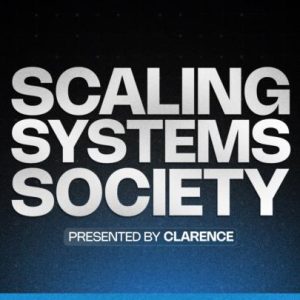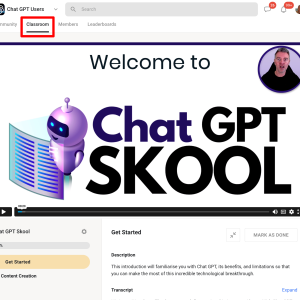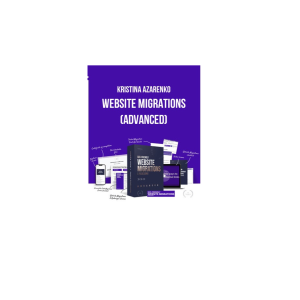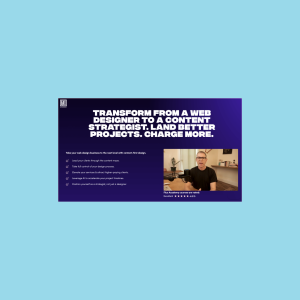Introduction: The Agony of the AI “Theorist”
Let me tell you about a feeling. It’s the late-night, staring-at-a-Jupyter-notebook, a-cold-knot-of-deep-and-profound-imposter-syndrome-in-your-stomach kind of feeling. You’re a software engineer. You’re a builder. You are fluent in the language of logic and code. But the world of Artificial Intelligence feels like a different universe, a universe that operates on a different set of physical laws. You’ve been trying to keep up. You’ve been reading the research papers, you’ve been watching the conference talks, you’ve been doing the online tutorials. You understand the concepts, the theories, the high-level architecture of a neural network. You can talk a good game about transformers and diffusion models. But you are a theorist, not a practitioner.
I have been there. I have lived in that quiet, desperate state of “AI-imposter-syndrome” for years. The dream was to be a part of this new revolution, to be one of the architects of this incredible, world-changing technology. The reality was that I was stuck on the sidelines, a spectator, watching as the real builders, the real engineers, were creating the tools and the applications that are defining the future. I was drowning in a sea of abstract knowledge, with no practical, real-world skills to show for it.
It’s a frustrating, demoralizing, and deeply isolating experience. You feel like you’re a classically trained musician who has been given a new, futuristic instrument with a thousand strange new buttons, and you have absolutely no idea how to make it sing. The gap between the theory and the practical, in-the-trenches, hands-on reality of building a real AI application feels like a chasm.
It was in that state of complete and utter frustration, of feeling like my existing, hard-won engineering skills were becoming obsolete, that I started looking for a different kind of education. I wasn’t looking for another academic course, another series of lectures on the mathematics of machine learning. I was looking for a bootcamp. A real, in-the-trenches, and brutally honest immersion into the practical craft of AI engineering. And that’s what led me, with a massive dose of skepticism, to the AI Engineering Bootcamp from AI Makerspace.
This wasn’t being pitched as just another online course. The words “Bootcamp” and “Makerspace” were a promise. A promise of an intense, hands-on, and project-based experience. It was a promise to stop talking about the theory and to start building the thing. It was a system, a blueprint, a step-by-step methodology for a traditional software engineer to make the leap and to become a real, confident, and competent AI engineer. It felt less like a course and more like a bridge to a new, and much more exciting, future.
The Philosophy: From Abstract Theory to Tangible Creation
I was cynical, of course. My brain is hardwired to be. The AI education space is a swamp of overhyped promises and shallow, superficial content. I needed to understand the philosophy behind this one. Was this just another collection of disconnected code snippets, or was it a different way of thinking about engineering education itself?
The core idea, as I came to understand it, was a profound and deeply refreshing paradigm shift. The philosophy of the AI Engineering Bootcamp is that you cannot truly learn how to build with this new technology by just reading about it. You have to get your hands dirty. You have to build. You have to fail. You have to debug. You have to wrestle with the messy, chaotic, and often deeply frustrating reality of making these complex systems actually work.
This was a gut punch. I had spent years of my life in a state of passive consumption, of “learning” without ever really “doing.” This philosophy was a direct and unapologetic assault on that passive, and ultimately useless, approach.
The philosophy is that a deep, practical, and hands-on understanding is the foundation of everything. The bootcamp isn’t about just talking about the latest AI model; it’s about taking that model and immediately trying to build something real, something useful, something tangible with it.
It’s about teaching you to think like a real AI engineer. It’s about learning to see the world not in terms of abstract concepts, but in terms of real-world problems that can be solved with a specific set of tools and a specific, disciplined workflow. It’s about moving away from the academic and toward the practical.
And it’s about community as a catalyst. It’s about the radical idea that we learn faster, we build better, and we go further when we do it together. It’s about creating a space where we can share our code, our struggles, our wins, and our half-baked, crazy ideas. This wasn’t just a different way of learning about AI; it was a different, and much more human, way of becoming an engineer.
What’s Included: The AI Engineer’s Toolkit
So what’s actually inside this digital bootcamp? I was expecting a series of technical, and probably very boring, video tutorials. What I found was a complete, A-to-Z, and almost overwhelming ecosystem for learning, building, and connecting.
The journey starts with the Foundational Modules. This is the core curriculum, the shared language of the modern AI engineer. You get a deep, but always practical, dive into the core, foundational skills you need. We’re talking about masterclasses on the latest language models, on the different types of AI architectures, on the tools and the platforms that are actually being used in the real world.
Then, you move into the heart of the program: the Project-Based Sprints. This is where the magic happens. The entire bootcamp is structured around a series of hands-on building projects. You don’t just learn about Retrieval-Augmented Generation (RAG); you build a real, functioning RAG application from scratch. You don’t just learn about AI agents; you build your own custom agent that can perform a real-world, multi-step task. These aren’t just theoretical exercises; they are real-world projects that you can put in your portfolio, that you can talk about in a job interview, that you can actually use.
The heart of the bootcamp is the Makerspace Community. This is not a chaotic, noisy Discord server. It is a curated, focused, and deeply intelligent space for real conversations and real collaborations. There are dedicated channels for different AI tools, for different programming languages, for different projects. The discussions are moderated by expert engineers, the quality of the conversation is incredibly high, and the signal-to-noise ratio is unlike anything I’ve ever experienced online.
And, of course, there are the Live Sessions and Expert Mentorship. There are regular live calls where you can get your specific, technical questions answered by the instructors and by your peers. There are code reviews, where you can get real, constructive feedback on your work. And there are regular guest expert sessions, where you get to learn from the leading engineers and researchers who are on the absolute cutting edge of the AI industry. It is a complete, holistic, and immersive ecosystem for becoming a real, confident, and competent AI engineer.
The Benefits: More Than Just a New Job Title
So what are the real, tangible benefits of going through this intense, hands-on, and often challenging process? It’s not just about being able to put “AI Engineer” on your resume, although that will almost certainly happen. It is about a complete and total transformation of your confidence, your competence, and your entire future as a technologist.
The most obvious benefit is that you finally move from being a passive theorist to being a confident, active, and powerful builder. You stop being a victim of the hype cycle, and you start being the one who is actually building the future. The feeling of being able to take a complex AI concept and to turn it into a real, working application is a profound, and deeply satisfying, form of creative power.
The second benefit is a massive acceleration of your learning curve. You are no longer trying to figure all of this out on your own, lost in the chaotic and often misleading wilderness of the internet. You are surrounded by a curated community of your peers and a team of expert mentors who are all there to help you succeed. You can learn in a single, intensive bootcamp what would have taken you years to figure out on your own through painful, expensive, and unnecessary trial and error.
The third benefit is future-proofing your career. The world is changing at a speed that is almost incomprehensible. The software engineering skills that were valuable yesterday are becoming a commodity tomorrow. The ability to design, to build, and to manage real, AI-powered systems is not just a nice-to-have skill; it is the fundamental, non-negotiable skill of the next two decades.
And the biggest benefit of all, for me, was the end of the imposter syndrome. The feeling of being on the outside looking in, of being a fraud who was just pretending to understand this new world, was replaced by a quiet, steady, and deeply earned confidence. I was no longer just a software engineer; I was an AI engineer.
Who Is This For? The Ambitious Builder
So who is this really for? After immersing myself in this world, I can tell you exactly who needs to be in this room.
This is for the experienced software engineer who knows how to build traditional applications, but who feels like they are being left behind by the AI revolution and who is ready to make the leap into this new, and incredibly exciting, field.
This is for the data scientist or the machine learning engineer who has a strong theoretical understanding of the models, but who wants to learn the practical, hands-on engineering skills required to build real, production-ready applications.
This is for the product manager who wants to have a deeper, more technical understanding of AI, so they can lead their teams more effectively and build better, more intelligent products.
And this is for the ambitious builder, the creator, the entrepreneur, who is not content to just be a user of AI tools, but who wants to be the one who is actually building them.
This is not for the person who is looking for a magic button. This is not for the person who is not willing to get their hands dirty with code. This is for the builders. This is for the engineers. This is for the people who are not afraid of the future, but are excited to start building it.
Conclusion: The End of the Theory
So here I am. The 1 AM, anxiety-fueled, and deeply unproductive nights of reading research papers are a thing of the past. The feeling of being a lonely, overwhelmed theorist has been replaced by the quiet, steady, and deeply focused confidence of a builder. The AI Engineering Bootcamp is more than just a course. It is a complete, A-to-Z, and battle-tested blueprint for becoming a real, confident, and competent builder in the age of artificial intelligence.
It is a declaration of independence from the tyranny of the abstract, of the theoretical, of the “someday.” With its project-based learning, its powerful community, and its relentless focus on helping you get real, tangible, and portfolio-worthy results, it is, in my honest and battle-tested opinion, one of the single most important and game-changing investments that any ambitious engineer can make in their own future.
If you are a builder, an engineer, a creator, and you are tired of the confusion, the frustration, and the loneliness of trying to navigate this new world on your own, then this is the answer you’ve been looking for. It is the end of the guesswork. It is the end of the doubt. And it is the end of the theory. It is the beginning of a smarter, more practical, and more human way to build the future.










Reviews
There are no reviews yet.